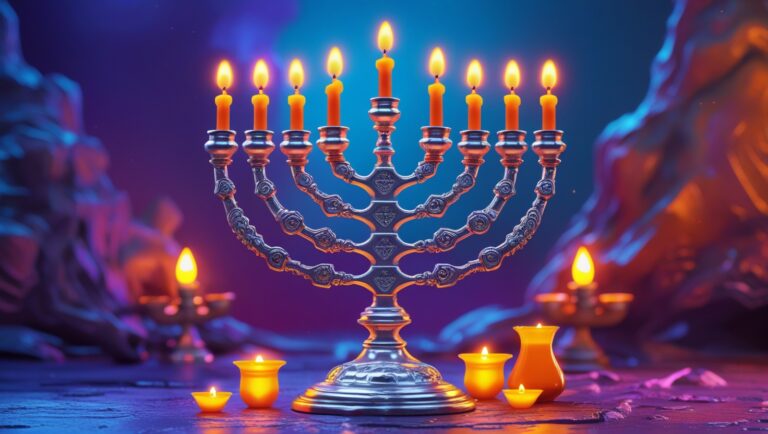It’s impossible to convey in a single the wondrous contributions to Kabbalah that the holy Rabbi Shalom Sharabi brought
Yet, we will attempt to do just that in his honor and hopefully he will forgive me for being short on words.
The great Mekubal R’ Yitzhak Kaduri remarked best that “one who studies the Kabbalah of the Arizal without the Rashash is like a blind person who goes out at night”. Many other luminaries said something along these lines. The reason is because if we were all geniuses and knew all the Kitvei Ari (writings of the Ari) by heart, we’d be hard-pressed to make sense of a lot of parts.
In his great wisdom, as he was compiling the Kitvei Ari, R’ Chaim Vital left many contradictions, places missing information and some say even “errors”, to detract unworthy individuals from understanding the exalted work of Kabbalah.
There are many questions we could be asking on it such as:
- How is there another Zivug (union) right after the Amidah of Shacharit during Nefilat Apayim? When did we elevate the berurim for that to happen?
- What exactly is happening on Chatzot HaLayla (midnight)?
- How are we able to elevate the Shekhina from the lower spiritual worlds to Atzilut when performing the Mitzvah to shake the Lulav before Shacharit? Why would it supposedly “go down” back again for prayer?
- Pretty much all the Kavanot that the Arizal writes about Rosh Hashana
All of these and a lot more were answered by Rabbi Shalom Sharabi in his writings and Siddur. Yet, in his extreme humility, he declared “I didn’t come here to write anything new, but only to elucidate the holy words of the Arizal”. Though everything he writes seem like a chiddush (novelty) and though he seems to turn the Kabbalah of the Arizal upside down, through this, everything ends up making sense. It’s a wonder.
A little about the life of Rabbi Shalom Sharabi
Rabbi Shalom Sharabi, famously known as the Rashash, was born in 1720 in the small town of Sharab, Yemen. His prodigious intellectual abilities were evident from a young age, but his life was marked by challenges. The untimely death of his father thrust him into the role of breadwinner, leading him to work as a traveling merchant.
Despite his financial responsibilities, he devoted his evenings to intense Torah study. During this period, he discovered the mystical teachings of Kabbalah, particularly the profound insights of the Ari (Rabbi Isaac Luria), which would later become the foundation of his life’s work.
There’s a famous account in which he was locked in the house of rich woman who wanted to seduce him. Knowing he was in danger, he threw himself from the window and made a vow midair to Hashem that, if he’d survive, he’d dedicate himself to spiritual work entirely. Miraculously, nothing happened to him as a result of the fall.
He eventually moved to the Holy Land, fulfilling his commitment, and settled in Jerusalem. There, he joined the prestigious Beit El Yeshivah, a leading center for kabbalistic study. Humble and unassuming, Rabbi Shalom initially concealed his immense knowledge, working as a shamash (sexton) while quietly absorbing the Yeshiva’s teachings.
Another known record of his stay in the Yeshiva is that the Rosh Yeshiva Gedalya Chayun had a difficult question which no one could answer. The students were shocked to see that the next day, the answer was inside one of the books he’d use. This pattern kept repeating until the daughter of the Rosh Yeshiva decided to investigate only to find out it was Rabbi Shalom Sharabi who was writing the answers and putting them there at night. They got married and he became the successor soon after.
The Rashash’s unparalleled understanding became known when he anonymously solved many kabbalistic complexities that had perplexed the yeshivah’s scholars, even many Chassidic Rebbes from Europe wrote to him their questions.
His contributions to Kabbalah
At the age of 27, Rabbi Shalom Sharabi was appointed head of the Beit El Yeshivah, a position he held for three decades. His tenure was marked by both spiritual and communal leadership. He formalized a structured approach to kabbalistic prayer and meditation through his magnum opus, the Siddur HaRashash. This is the printed Siddur which is known and contains the Kavanot (mystical intentions) he put down in paper. Other students of his made additions to the siddur based on his teachings, but some Kabbalist don’t accept them.
Either way, this Siddur provides detailed instructions on meditative intentions (kavanot), enabling students to to align their prayers with the spiritual worlds and perform the Tikkunim needed for the day. The introduction to the siddur, Rechovot HaNahar, remains a foundational text for students of Kabbalah today, after one goes through the Otzrot Chaim by R’ Yaakov Tzemach and his student R’ Meir Paprish based on the writings of Rabbi Chaim Vital. It also adds depth to the whole understanding of the Sephirot and the spiritual worlds.
The Rashash was a revered mentor, counting among his students luminaries like Rabbi Chaim Yosef David Azulai (the Chida) and Rabbi Yom-Tov Algazy. His influence extended beyond scholarship, as he actively protected the Jewish community in Jerusalem and mediated conflicts with surrounding communities.
His teachings emphasized humility, devotion, and unwavering reliance on the writings of the Ari and Rabbi Chaim Vital, shunning other kabbalistic interpretations by contemporaries of the Arizal.
The 4 principles by Rabbi Shalom Sharabi
The 4 principles of the Rashash govern much of his teachings. Again, they are not novelties, but underlying revelations we need to understand in order to make sense of the Kabbalah of the Arizal.
They are:
1. The principle of lenght (orech) and depth (ovi)
This principle stipulates that there are 2 main ways of looking at the array of Sephirot:
The first one is where one is stacked upon or vested inside another in a vertical fashion, also called “length”. This is how the Kabbalah of the Arizal seems to be at first glance and is also called “individuality” (pratut).
The second way is called “depth”, in which we have 6 spiritual systems (partzufim) lined up one in front of the other, the closes to the Kav Ein Sof being Atik Yomin and the furthest away being Nukvah (the Shekhinah). Each of these 6 systems have also the 6 systems inside as well and this is called “generality” (klalut).
Essentially, imagine a person has been seeing everything in 2D, and now he can see more in 3D. Before he could see 6 Partzufim, and now he can see 36.
2. The principle of inclusivity
This principle states that each Sefirah and each world contains within it all the other Sefirot and spiritual worlds. It describes an interconnected system where every part reflects the whole and is part of many of the Kavanot we use in the Siddur of the Rashash.
3. The principle of Arachin (relative value)
This principle refers to the relative positioning and hierarchy of the Sefirot and worlds, which are arranged in different levels according to their function and role in the spiritual system.
Thus, Zeir Anpin and Nukvah are only called so because, relative to us, they are the first 2 Partzufim of Atzilut. Once they grow, they assume the status of Abba and Imma. Similarly, what was previously called Abba and Imma becomes Arich Anpin and Nukvah of Arich.
In the words of the Rashash: all the partzufim are essentially the same and the only difference between them is the “exaltedness” and “brightness” of their lights.
The only absolute position we can say is Ein Sof, which is outside of our grasp. Everything else is relative.
4. The principle of the Drush (exposition of) HaDa’at
This is the most complex and earth shattering principle because it seems to flip everything upside down. It states that the Partzufim can be interpreted as Sephirot in a different array and vice versa.
Altogether there are always a maximum of 12 Partzufim in any given system, which are:
- Atik Yomin
- Nukvah of Atik Yomin
- Arich Anpin
- Nukvah of Arich Anpin
- Abba Ila’ah
- Imma Ila’ah
- Israel Saba
- Tevunah
- Zeir Anpin (or Israel)
- Leah
- Yaakov
- Rachel
Sometimes these Partzufim are reduced to six (or even five) that we are most familiar with.
One of the most common uses of the Drush HaDa’at is when using the Kavanah of the רפ״ח ניצוצין (288 sparks) to condense these 12 into the 9 Sephirot of the 4 holy names of the A”b that fell to the spiritual worlds of Beriyah, Yetzirah and Assiyah, which we can see on the left side of the following picture:
As we see, the first row contains the Berurim of Atik, Abbah and Zeir Anpin, corresponding to the right column of Chokhmah, Chessed and Netzach
The second row contains the Berurim of Nukva of Atik, Immah and Nukvah d’Z”A, corresponding to the left column of Binah, Gevurah and Hod
The third row contains the Berurim of Arich, Israel Sabah and Yaakov, which correspond to the side of Chassadim of the middle column of Da’at, Tiferet and Yesod.
The fourth row contains the Berurim of Nukvah of Arich, Tevunah and Leah, which correspond to the side of Gevurot of the middle column of Da’at, Tiferet and Yesod.
We’ve barely scratched the surface of this incredible idea and of course there are many other ways to organize the Sephirot which are of course outside the scope of this article.
Place of rest
Rabbi Shalom passed away in the 10th of Shevat of 1777 and was interred on the Mount of Olives in Jerusalem.
Before his passing, he made a promise: prayers offered at his gravesite with a pure heart would not go unanswered. Many have the custom to recite the great Kabbalistic Prayer of the Rashash which he composed and can be found here and can be recited any time, but preferably after midnight (don’t go to the cemetary at night).
His work continues to inspire, guiding Jews in their journeys and shaping the study of Kabbalah for generations to come.
May his memory be for a blessing and his merit protect us.







